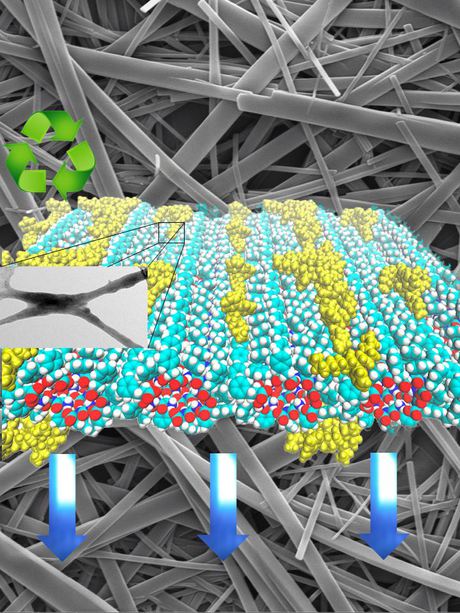Biodegradable displays for electronics

University of Missouri researchers are on the path to creating biodegradable electronics by using organic components in screen displays. The development could one day help reduce electronic waste in the world's landfills.
“Current mobile phones and electronics are not biodegradable and create significant waste when they're disposed," said Suchismita Guha, professor in the Department of Physics and Astronomy at the MU College of Arts and Science.
“This discovery creates the first biodegradable active layer in organic electronics, meaning — in principle — we can eventually achieve full biodegradability."
Guha, along with graduate student Soma Khanra, collaborated with a team from the Federal University of ABC (UFABC) in Brazil to develop organic structures that could be used to light handheld device screens. Using peptides, or proteins, researchers were able to demonstrate that these tiny structures, when combined with a blue light-emitting polymer, could successfully be used in displays.
“These peptides can self-assemble into beautiful nanostructures or nanotubes, and, for us, the main goal has been to use these nanotubes as templates for other materials," Guha said. “By combining organic semiconductors with nanomaterials, we were able to create the blue light needed for a display. However, in order to make a workable screen for your mobile phone or other displays, we'll need to show similar success with red and green light-emitting polymers."
The scientists also discovered that by using peptide nanostructures they were able to use less of the polymer. Using less to create the same blue light means that the nanocomposites achieve almost 85% biodegradability.
“By using peptide nanostructures, which are 100% biodegradable, to create the template for the active layer for the polymers, we are able to understand how electronics themselves can be more biodegradable," Guha said.
3D semiconductor chip alignment boosts performance
Researchers have developed an ultra-precise method to align 3D semiconductor chips using lasers...
Researchers achieve 8 W output from optical parametric oscillator
Researchers have demonstrated a total output power of 8 W from a high-power mid-infrared cadmium...
"Dualtronic" chip for integrated electronics and photonics
Cornell researchers have developed a dual-sided chip known as a "dualtronic" chip that...






